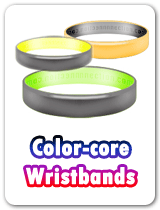Features of Leather :
Early Leather Production :
- The initial crude leathers were made by first immersing the raw hides and skins in a fermenting key of organic matter in which bacteria grew and molested the hides or skins, resulting in a loosening of the hair or wool and a few dissolving out of skin protein.
- The hair or wool was then scraped off with prehistoric blunt stone or wooden scrapers and fat or meat still sticking on to the flesh side was removed in an alike manner.
- Tanning, the conversion of pelt into leather, was done by dusting the raw stock with ground up bark other organic substance and placing them in shallow pits or vats of tannin answer. Additional additions of ground bark were created from time to time until the tannin solution had penetrated right through the skin structure, taking up to two years for very solid hides. The leather was then hung up for many days in open sheds.
- The dressing of the leather caught up paring or shaving it to a level thickness, colorings, treatment with oils and greases,drying and final treatment of the grain area with waxes, proteins like blood and egg albumins, and shellac to produce attractive surface finishes.
- Latterly of the nineteenth century, the invention of the motor car, new roads, new ranges of coal tar dyestuffs, the demand for softer, lightweight footwear with a fashionable appearance, and a common rise in the standard of living made a demand for soft, supple, colorful leather.
- The conventional vegetable tanned leather was too firm and thick for these necessities and thus, the use of the salts of the metal chromium was taken on and chrome tanning became the tonnage for modern footwear and fashion leathers. It produces soft, supple, beautiful and well leathers, reflecting the way we live.
- Use of leather :
The earliest Britans had many uses for leather from footwear, clothing and leather bags, to articles of warfare. The hulls of the untimely boats, known as coracles, were also covered in leather. - Wall paintings and artifacts in Egyptian tombs point out that leather was used for
- Sandals
- Clothes
- Gloves
- Buckets
- Bottles
- Shrouds for burying the dead
- Armed equipment.
- The prehistoric Greeks and Romans also made extensive use of leather and it has remained an important industrial raw material ever since those times.
- The Romans used leather on a broad scale for
- Footwear
- Clothes
- Armed equipment including shields
- Saddles and harnesses.
- Quarry of Roman sites in Great Britain has yielded large quantities of leather articles like footwear and clothing.
- Throughout the centuries leather manufacture expanded gradually and by mediaeval times most towns and villages had a tannery, located on the local stream or river, which they used as a source of water for processing and as a basis of power for their water wheel driven machines.
- Many of these tanneries still exist, but in a lot of towns the only lasting evidence is in street names, like Tanner Street, Bark Street and Leather Lane.



